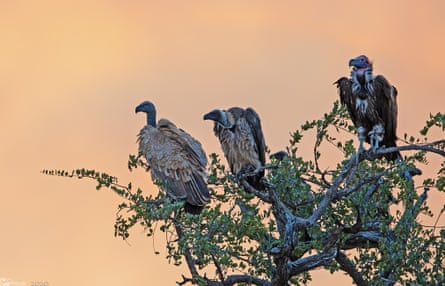A recent study has found that Africa’s predatory birds are facing a significant decline in population, which could have unforeseen effects on humans.
According to recent analysis, various tropical birds of prey such as the martial eagle, bateleur, and dark chanting goshawk have disappeared from large portions of Africa in the last four decades due to the conversion of wild lands into agricultural areas. This trend may result in the local extinction of multiple African raptor species in numerous countries by the end of the 21st century.
A recent study published in the journal Nature Ecology and Evolution utilized road surveys to determine that approximately 90% of the 42 species of raptors examined have encountered decreases in population, with over two-thirds displaying signs of being at risk on a global scale.
The researcher in charge of the study, Dr. Phil Shaw from the University of St Andrews, explained that the extinction of top predator birds could have unforeseen effects on humans. He gave the example of how the decrease in Indian vultures resulted in an increase in rabies cases among humans in the 1990s.
According to the research, African birds of prey, which have the ability to hunt larger animals such as jackals and antelopes in addition to smaller prey like snakes and rodents, are relying more heavily on protected areas like national parks and reserves. While some populations of these birds also decreased in these protected areas, the decline was typically slower. The researchers emphasized the significance of a United Nations goal to safeguard 30% of the planet for the preservation of nature by the end of the current decade.

According to Shaw, although protected areas offer some level of protection, they have not been able to prevent the decline of raptors. In some cases, the decline has been quite significant. In fact, 40% of the 42 raptor species studied were found to be declining within protected areas at a rate that would classify them as endangered. Essentially, these birds have no other safe habitats to seek refuge in.
Shaw stated that the inspiration for the broader research was a 2015 study on African vultures. The study revealed that numerous vultures were in grave danger due to poisoning and persecution, leading to their critically endangered status.
“We have examined a total of 42 types of birds of prey, including vultures. Surprisingly, we have discovered that a significant number of the larger raptors are experiencing a decline at a similar rate as the vultures,” he stated.
According to the research, the decreases were most noticeable in western Africa, which aligns with the expansion of agriculture and insufficient funding for protected regions. Shaw warned that there may be unforeseen outcomes for locations where birds of prey have vanished.
The vultures play an important role in the ecosystem by eliminating carcasses. In India, a similar population decline of vultures resulted in a rise of feral dogs, especially in urban areas. This led to a significant increase in rabies cases among the human population due to dog bites.
-
Find more age of extinction coverage here, and follow biodiversity reporters Phoebe Weston and Patrick Greenfield on X for all the latest news and features
Source: theguardian.com


















